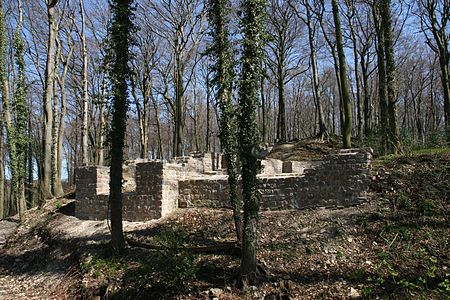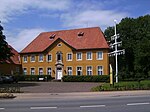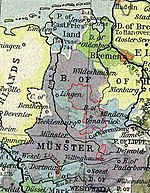The Prince-Bishopric of Osnabrück) (German: Hochstift Osnabrück; Fürstbistum Osnabrück, Bistum Osnabrück) was an ecclesiastical principality of the Holy Roman Empire from 1225 until 1803. It should not be confused with the Diocese of Osnabrück (German: Bistum Osnabrück), which was larger and over which the prince-bishop exercised only the spiritual authority of an ordinary bishop. It was named after its capital, Osnabrück.
The still-extant Diocese of Osnabrück, erected in 772, is the oldest see founded by Charlemagne, in order to Christianize the conquered stem-duchy of Saxony. The episcopal and capitular temporal possessions of the see, originally quite limited, grew in time, and its prince-bishops exercised an extensive civil jurisdiction within the territory covered by their rights of Imperial immunity. The Prince-Bishopric continued to grow in size, making its status during the Reformation a highly contentious issue. The Peace of Westphalia left the city bi-confessional and had the Prince-Bishops alternate between Catholic and Protestant.
The bishopric was dissolved in the German Mediatisation of 1803, when it was incorporated into the neighboring Electorate of Hanover. The see, the chapter, the convents and the Catholic charitable institutions were secularized. The territory of the see passed to Prussia in 1806, to the Kingdom of Westphalia in 1807, to Napoleonic France in 1810, and back to Hanover in 1814.
With the end of the prince-bishopric, the future of the diocese became unclear. Klemens von Gruben, titular Bishop of Paros in Greece, was made vicar apostolic of Osnabrück, and as such cared for the spiritual interests of the Catholic population. The ordinary Latin (Roman) Catholic episcopacy was restored in 1824, but henceforth the bishops would no longer wield any temporal power.








